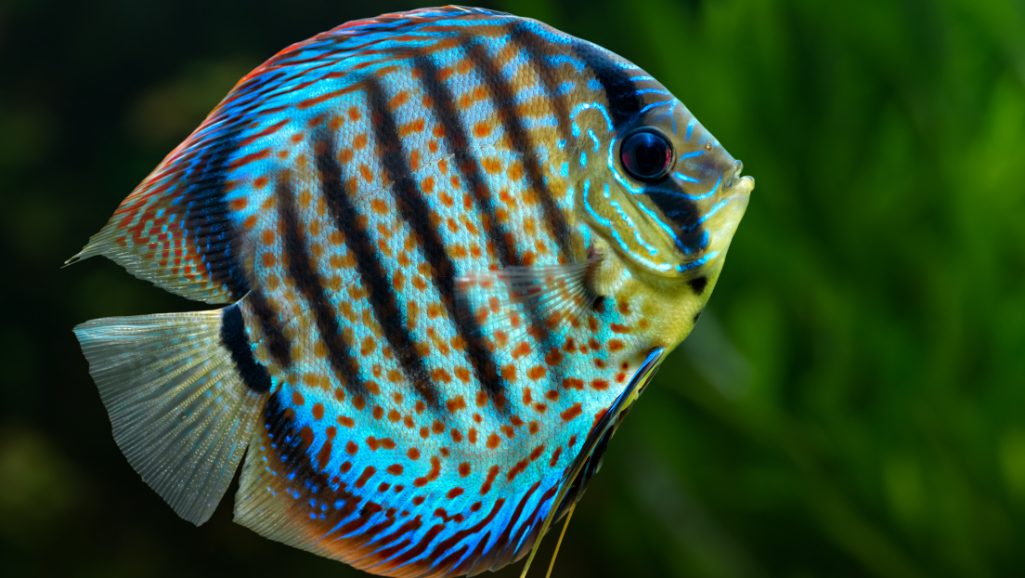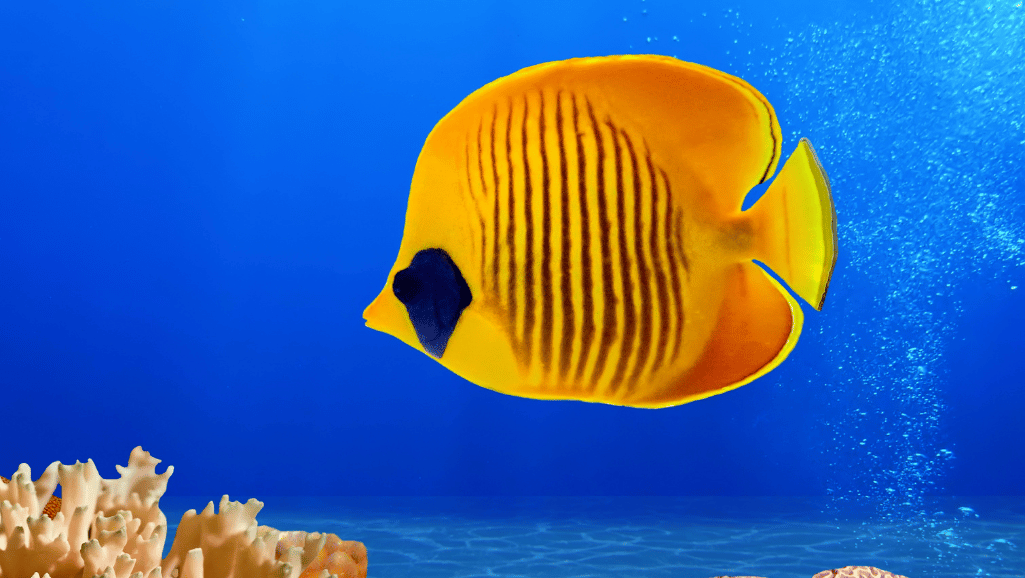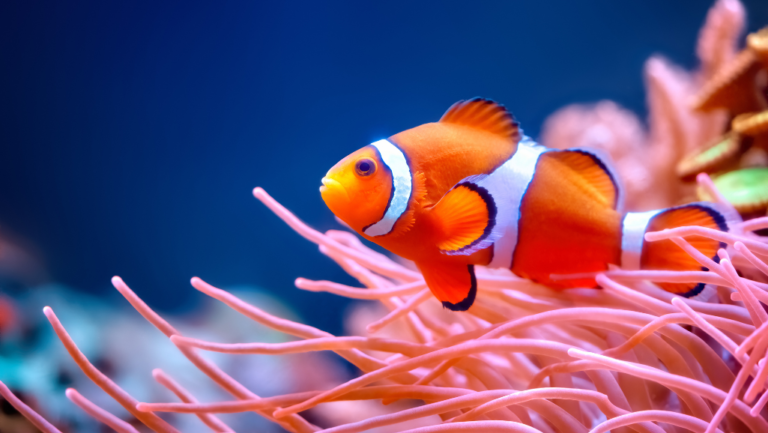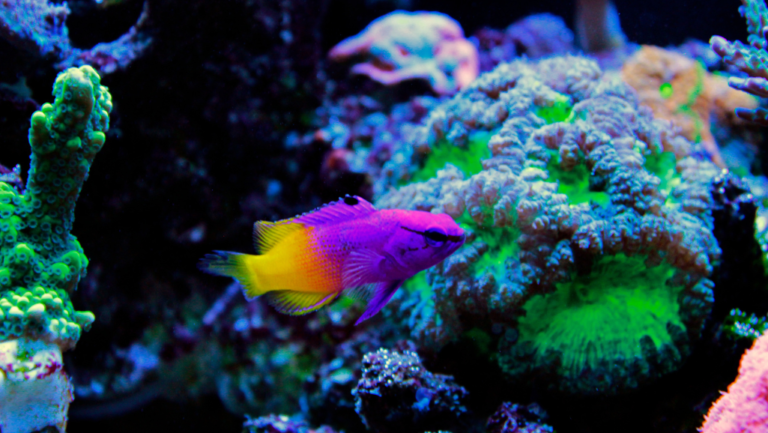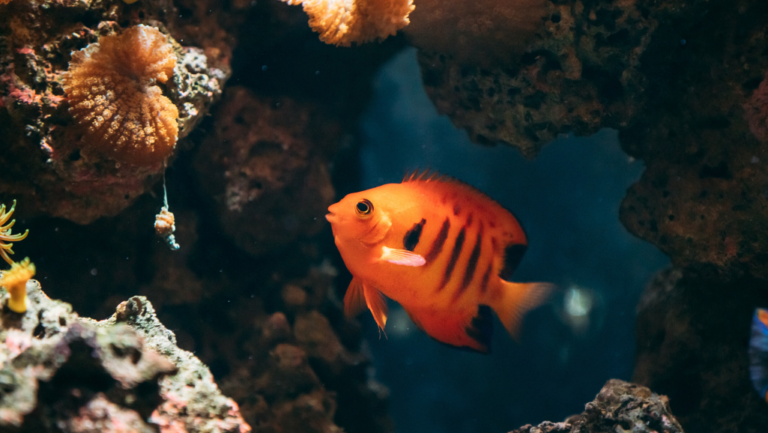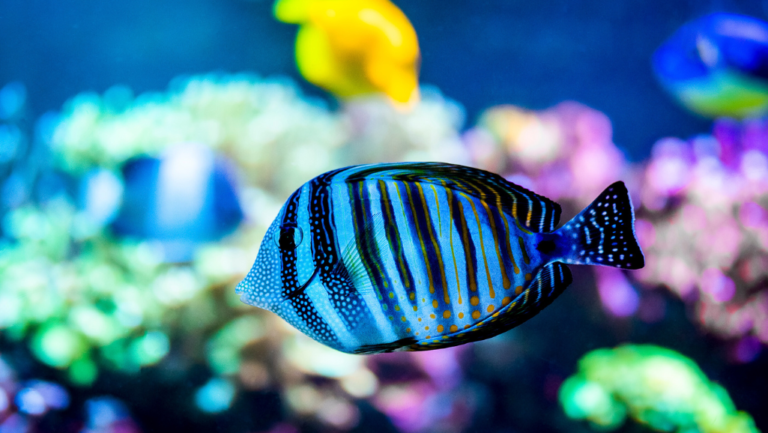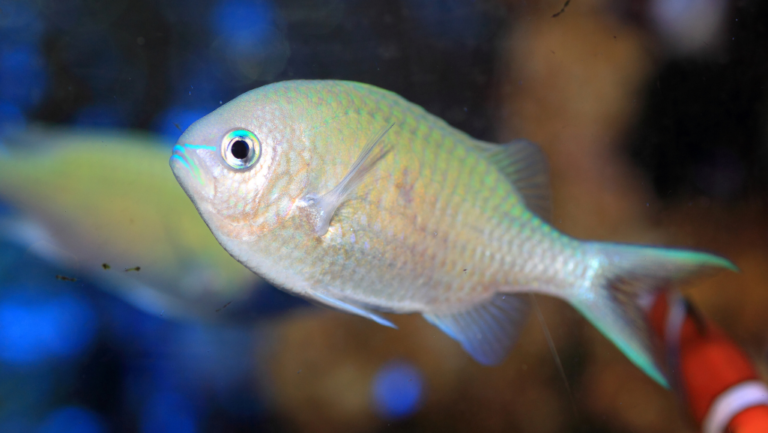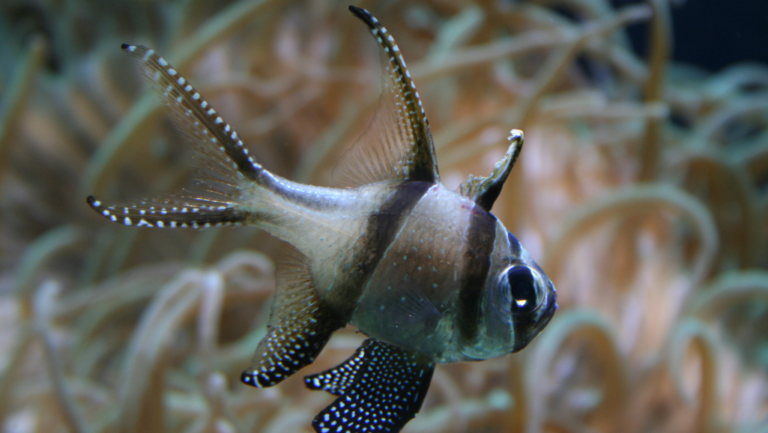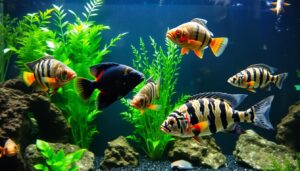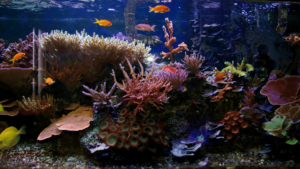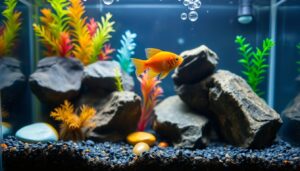Bright, active, and purposeful — the yellow eye beauty known as the eye Kole Tang life and utility to any reef display. Its oval body and the yellow ring around the eye create striking contrast against live rock and corals.
As a focused grazer, this fish prefers algae and detritus and benefits from supplemental seaweed on a clip a few times per week. It thrives in a roomy aquarium of 70+ gallons with good flow and places to explore.
Shop from a trusted diver den or reef seller and pick the right size for your system. With the right aquarium supplies and stocking order, this yellow eye tang polishes glass and rock while staying generally safe with reef invertebrates.
Key Takeaways
- Active grazer: excels at controlling algae and detritus.
- Distinctive features: oval body with a yellow eye ring adds visual appeal.
- Tank needs: 70+ gallons with ample swimming room and flow.
- Feeding: supplement with marine seaweed on a clip several times weekly.
- Compatibility: reef-safe for inverts but may challenge other tangs.
- Purchasing tip: order from a reputable diver den and match size to system capacity.
Meet the Yellow Eye Marvel: Features and Benefits for a Thriving Reef Aquarium
The yellow eye marvel combines elegant form with a relentless appetite for algae, making it a reef favorite.
Spotlight on Species: Ctenochaetus strigosus (kole tang)
Ctenochaetus strigosus is the definitive spotted bristletooth, first described in 1828 and native to Hawaiian waters.
Distinctive Look: Oval Body, Gold Ringed Eye, Stripes and Spots
Juveniles show yellow-gold stripes and spots that mature into a purplish-brown sheen with fine blue lines.
A conspicuous yellow ring around the eye and a laterally compressed, oval body make this fish a standout in any aquarium.
Why Reefers Love It: Natural Algae Grazer That Polishes Rock and Glass
Its small mouth and bristle-like teeth sift diatoms, detritus, and algae with precision.
Benefit: daily grazing helps maintain clearer water and cleaner rock surfaces, letting corals pop visually.
Quick Stats at a Glance
- Size: ~15 cm (about 6 inches)
- Temperament: active grazer; semi-assertive with other tangs
- Quick stats mean: best kept as the sole tang in a 70+ gallon aquarium
- Ideal water parameters: stable, oxygen-rich flow and mature systems
Kole Tang: Care, Feeding, and Compatibility Essentials
Set your system up right and this yellow eye grazer will reward you with color and constant cleaning. Prepare a mature 70+ gallon tank with brisk, oxygen-rich flow and long swim paths to match the fish’s energetic laps.
Tank readiness
Structure rockwork for open channels so the fish can patrol glass and live rock. Stable water parameters and ample oxygen keep color and activity high.
Feeding routine
Offer an algae-first menu. Attach marine seaweed sheets to a secure clip at least three times per week to encourage grazing.
Rotate trusted brands such as Sea Veggies, Seaweed Salad, and Ocean Nutrition. Use frozen foods sparingly as supplements rather than staples to maintain digestive health.
Stocking wisdom
This eye kole tang can be semi-assertive with other tangs, so most hobbyists keep it as the sole tang in a display. It stays peaceful with reef invertebrates, making it a valuable clean-up crew member.
- Care level: Moderate — requires stable conditions.
- Size and body: Monitor growth and adjust space and diet as it matures.
- Compatibility: Best added thoughtfully to established systems.
Order with Confidence: Availability, Shipping, and What to Expect
Plan your purchase around clear weekly shipping windows to keep acclimation simple and stress low. Sizes range from about 1″ to 6.5″, so choose the specimen that fits your display and life stage.
Free Shipping Qualifying and Weekly Shipping Windows
Shop live inventory with availability notes so you can time orders to a chosen week. Take advantage of free shipping qualifying promotions when they apply to aquarium supplies and live stock.
Expect streamlined packing, reliable handling, and predictable shipping windows aimed at live-arrival success. Track your order and prepare aeration and drip-acclimation gear ahead of the delivery.
Please Note: Item May Look Identical to Image Provided
Appearance varies by maturity and origin. Juveniles show more yellow-gold stripes and spots; adults deepen in tone but may still match the photo.
Always use the product page contact options—click information links or email support—for sizing, compatibility, and acclimation questions. For standout picks, watch diver den releases and curated drops.
- Pack smart: bundle nets, nori, clips, and acclimation kits with your order.
- Shipping tips: review shipping qualifying details and plan to be home the delivery week.
- Buyer help: click information on the product page or send an email for fast answers.
Conclusion
Selecting the right specimen and prepping the tank sets the stage for an eye kole that rewards steady husbandry. A well-chosen kole tang (ctenochaetus strigosus) becomes a living focal point, showing subtle stripes as it matures into its oval body.
Keep care simple: stable ideal water parameters, brisk flow in a 70+ gallon aquarium, frequent seaweed on a clip, and sensible prepared foods with frozen foods as an occasional supplement. This routine supports grazing on algae and confident daily patrols across rock and glass.
Use the quick stats to match size, tank space, and compatibility. When you plan ahead, the yellow eye kole or eye tang will elevate your reef—clearer viewing, lively color, and steady enjoyment every week.
